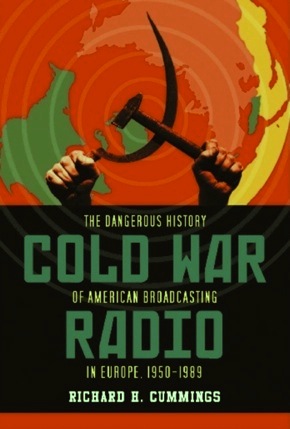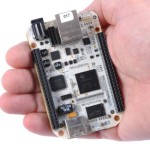Posts Tagged ‘SWL’
 What is the big deal with amateur radio? What is it that you hear? (Part 1)
What is the big deal with amateur radio? What is it that you hear? (Part 1)

Shortwave radio has been a source for great sci-fi plots, spy intrigue novels, movies, and so on, since radio first became a “thing.” But, what is the big deal, really? What is it that amateur radio operators listen to?
In this video, I share some of the types of signals one might hear on the high frequencies (also known as shortwave or HF bands). This is the first video in an on-going series introducing amateur radio to the interested hobbyist, prepper, and informed citizen.
I often am asked by preppers, makers, and other hobbyists, who’ve not yet been introduced to the world of amateur radio and shortwave radio: “Just what do you amateur radio operators hear, on the amateur radio shortwave bands?”
To begin answering that question, I’ve taken a few moments on video, to share from my perspective, a bit about this shortwave radio thing:
Link to video: https://youtu.be/pIVesUzNP2U — please share with your non-ham friends.
From my shortwave website:
Shortwave Radio Listening — listen to the World on a radio, wherever you might be. Shortwave Radio is similar to the local AM Broadcast Band on Mediumwave (MW) that you can hear on a regular “AM Radio” receiver, except that shortwave signals travel globally, depending on the time of day, time of year, and space weather conditions.
The International Shortwave Broadcasters transmit their signals in various bands of shortwave radio spectrum, found in the 2.3 MHz to 30.0 MHz range. You might think that you need expensive equipment to receive these international broadcasts, but you don’t! Unlike new Satellite services, Shortwave Radio (which has been around since the beginning of the radio era) can work anywhere with very affordable radio equipment. All that you need to hear these signals from around the World is a radio which can receive frequencies in the shortwave bands. Such radios can be very affordable. Of course, you get what you pay for; if you find that this hobby sparks your interest, you might consider more advanced radio equipment. But you would be surprised by how much you can hear with entry-level shortwave receivers. (You’ll see some of these radios on this page).
You do not need a special antenna, though the better the antenna used, the better you can hear weaker stations. You can use the telescopic antenna found on many of the portable shortwave radios now available. However, for reception of more exotic international broadcasts, you should attach a length of wire to your radio’s antenna or antenna jack.
 Historic adverts?
Historic adverts?
Thanks to Phil G4HFU (see earlier post) I have been reacquainted with the old PW adverts that got me dreaming over 50 years ago. I wonder if other blog readers can point me in the direction of old UK magazines and adverts? I was first interested in radio and SWLing in the early 1960s.
Back then, the world was a very different place. The Beatles were still in the future. We lived under the constant fear of all out nuclear war (I was terrified in the 1962 Cuba crisis) and most amateur DX was by CW or AM. Although RTTY was around, most digital modes were not. Magazines like Practical Wireless, Radio Constructor and Short Wave Magazine were filled with goodies I drooled over, but could not afford. Even now I do not like parting with money for amateur gear unless there is a good chance of getting very many years of good service from it.
 LHS Episode #124: Dog Boarding
LHS Episode #124: Dog Boarding
 Hello, folks! A couple weeks late and a dollar or two short, we’re back! In this delectable episode of Linux in the Ham Shack, your intrepid hosts discuss a variety of topics from antenna safety to Linux conventions to getting your name on an asteroid. For our main discussion, we tackle a couple updates to Linux distributions, including one specifically for amateur radio use. Then we plow on through a heaping helping of feedback. Thanks for tuning in, and be sure to tell all your friends about us. Also, hope to see you all at Dayton this year! Rewards for those who pledged to our fund are coming soon. Stay tuned.
Hello, folks! A couple weeks late and a dollar or two short, we’re back! In this delectable episode of Linux in the Ham Shack, your intrepid hosts discuss a variety of topics from antenna safety to Linux conventions to getting your name on an asteroid. For our main discussion, we tackle a couple updates to Linux distributions, including one specifically for amateur radio use. Then we plow on through a heaping helping of feedback. Thanks for tuning in, and be sure to tell all your friends about us. Also, hope to see you all at Dayton this year! Rewards for those who pledged to our fund are coming soon. Stay tuned.
73 de The LHS Guys
 An Amazing Moment in Space Weather – Massive Solar Eruption June 2011
An Amazing Moment in Space Weather – Massive Solar Eruption June 2011
While many are talking about how Solar Cycle 24 is the weakest since the Maunder Minimum (the period starting in about 1645 and continuing to about 1715 when sunspots became exceedingly rare, as noted by solar observers of the time — see this Wiki entry), there are moments when activity on the Sun strongly increases, providing brief moments of excitement.
Here is a case in point, witnessed by the Solar Dynamics Observatory (SDO; see SDO Mission) on June 7, 2011, when the Sun unleashed a magnitude M2 (a medium-sized) solar flare with a spectacular coronal mass ejection (CME). The large cloud of particles mushroomed up and fell back down looking as if it covered an area almost half the solar surface.
SDO observed the flare’s peak at 1:41 AM ET. SDO recorded these images in extreme ultraviolet light that show a very large eruption of cool gas. It is somewhat unique because at many places in the eruption there seems to be even cooler material — at temperatures less than 80,000 K.
This video uses the full-resolution 4096 x 4096 pixel images at a one minute time cadence to provide the highest quality, finest detail version possible. The color is artificial, as the actual images are capturing Extreme Ultraviolet light.
It is interesting to compare the event in different wavelengths because they each see different temperatures of plasma.
Credit: NASA SDO / Goddard Space Flight Center
Video: http://g.nw7us.us/1aOjmgA – Massive Solar Eruption Close-up (2011-06-07 – NASA SDO)
Visit: SunSpotWatch.com











